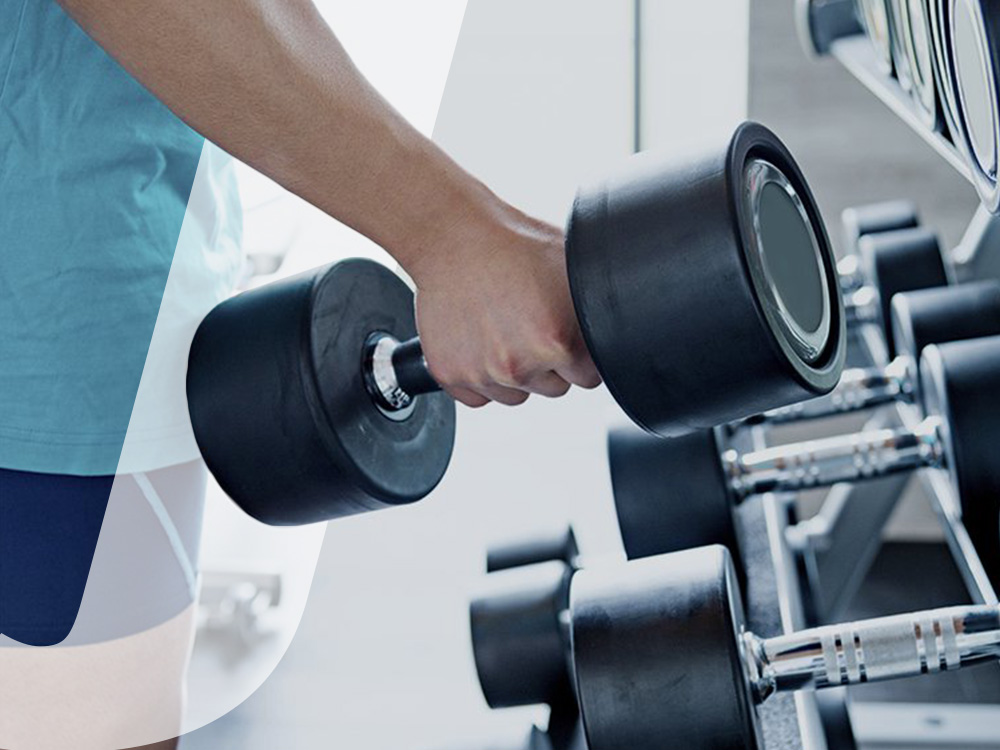As you all hopefully know by now, there’s much more to strength training than bicep curls and leg extensions! If you do, however, find yourself stuck in an outdated strength routine, it’s time to take a look at some strength exercises that will give your time in the gym a big boost.
Whether you’re a beginning exerciser or a seasoned fitness fanatic, here are 6 exercises that should be a part of your regular routine.
Goblet Squats
This is a squat done while holding a weight in front of you (like a goblet), which adds more of a workout for your core and legs and also makes getting into the correct squat form much easier.
How to do them: Hold a dumbbell with both hands underneath the ‘bell’ at chest level, and set your feet shoulder-width apart with your toes pointing slightly outwards. Push your butt back like you’re sitting in a chair and descend until your elbows reach the inside of your knees. Keeping your heels flat, pressing onto the floor, pause at the bottom of the squat, and return to a full standing position. Repeat for four sets of 8-10 reps. Increase the weight as you progress and feel more comfortable with the move.
Kettlebells also work great for Goblet Squats. Simply follow the steps above but hold the outer “horns” on the kettlebell so that your elbows are pointing down.
Pallof Press
This “anti-rotation” movement is challenging because you must resist rotation forcing your obliques, abs, lower back, and glutes to do the work.
How to do them: Stand perpendicular to a cable column or an attached resistance band with the column’s arm or band set around shoulder height. Grab the handle or band with both hands and pull it in to the chest, maintaining tension on the cable or band. Feet should be shoulder-width apart, and the feet, knees, hips and shoulders all remain square and facing straight ahead throughout movement.
Holding the chest high, squeeze through the stomach and press the handle away from the body, extending the arms straight while resisting any twisting or rotation. It’s at this point the resistance will be highest. Continue to engage your core, and ensure you remain square and straight and resist the rotational force. Bring arms back in to the chest and repeat for three sets of 10 reps per side.
Dumbbell Row
The Dumbbell Row helps develop a strong back, arms and core. Plus, because it works your lats, traps, and rhomboids, it supports proper posture by pulling your shoulders back and helping to stabilize your spine.
How to do them: Grab a dumbbell and find a bench. Start with your left hand on the bench with left arm extended, while your right arm holds the dumbbell and right foot is on the ground. Retract your shoulders, brace your abs, and pull the weight up on the side of your body to the rib cage while pulling your elbow up toward the ceiling. Lower under control and repeat for three sets of 6-8 reps on each side.
Push-Ups
Push-Ups are a deceptively simple functional movement that works your upper-body muscles while engaging your core and allowing you to use the full range of motion in your shoulder blades.
How to do them: Start on your knees facing the floor with your hands at shoulder-width, planted directly under the shoulders. Assume a plank position by straightening your legs, supporting your weight with hands and feet. Squeeze your backside to keep your trunk engaged and lower your body slowly to the ground. The elbows should be slightly tucked — like arrows, rather than flared like the letter ‘T’. Descend until your chest is just above the ground and return to the starting position by fully extending your arms, and repeat.
Note: If you can’t do five push-ups with good form, elevate your hands on a bench or chair to begin building up your strength. If push-ups are easy, try elevating your feet on a chair on adding a weight vest. Make sure you’re able to perform three sets of 12 perfect push-ups with your bodyweight before adding a vest or elevating your feet.
Lateral Squats
These are a combination of a lateral lunge and a squat, useful for stretching your groin and inner thighs while also targeting your hips, thighs, and core.
How to do them: Stand tall with your feet wider than shoulder-width apart, heels flat on the ground and toes pointed forward. Initiate the movement by pushing your hips backwards, bending your left leg, and leaning to your left with your right foot angled out slightly. The left knee should be bent, left heel flat on the floor, and right leg extended with your weight over the left side of your body. This is one rep. Return to a standing position and descend doing the same movement on your right side to even things out. Perform six reps per leg for three sets.
Glute Bridges/Hip Thrusts
This exercise helps train your glutes, which are often underutilized if you sit for long periods each day.
How to do them: Position the back of your shoulders across a stable bench, feet planted firmly on the ground, about six inches away from your butt. Squeezing the glutes, push through your heels to rise up into a bridge position with the hips fully extended. The shoulders down to the knees should be in line, with the knees bent at 90 degrees. Hold the position at the top with the glutes, core and hamstrings engaged. Lower the hips down and repeat for three sets of eight reps. Beginners can continue with just bodyweight, while more advanced lifters can progress to placing a weight plate over the top of the hips for added difficulty.
About the writer: Ken Grall is a Certified Strength & Conditioning Specialist (CSCS) and owns and operates an Edge Fitness in Madison, Wisconsin.
Learn more about Ken.


